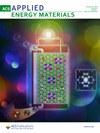自视模式会使女性比男性产生更多视频会议疲劳吗?一项使用脑电信号的实验。
IF 5.4
3区 材料科学
Q2 CHEMISTRY, PHYSICAL
引用次数: 0
摘要
可以查看或隐藏自己的图像是视频会议平台的一个典型功能。以往的研究主要通过自我报告的数据得出结论,认为开启自视模式与视频会议疲劳有关,尤其是对女性而言。本研究的目的是通过收集神经生理学证据来验证这一假设。我们使用脑电图(EEG)对 32 名志愿者(16 名男性和 16 名女性)进行了一项实验,他们分别参加了一次开启和关闭自视模式的实时视频会议。我们的研究结果证实了自我视图对疲劳的影响,自我视图开启时的α活动明显高于关闭时。在 20 分钟的会议中,阿尔法活动没有明显变化,男性和女性的阿尔法活动也没有明显差异。因此,我们的研究并没有重复之前的研究结果,即由于在屏幕上观看自己时产生的自我意识增强,女性在视频会议中会感到更疲劳。我们将讨论为什么我们的脑电图研究结果可能与之前的自我报告研究结果不同。本文章由计算机程序翻译,如有差异,请以英文原文为准。
Does Self-View Mode Generate More Videoconferencing Fatigue in Women than Men? An Experiment Using EEG Signals.
The ability to see or hide one's own image is a typical feature of videoconferencing platforms. Previous research, informed primarily by self-reported data, has suggested that enabling self-view mode is associated with videoconferencing fatigue, particularly for women. Our goal in this study is to test this assumption by gathering neurophysiological evidence. We conducted an experiment using electroencephalography (EEG) with 32 volunteers (16 men and 16 women), who each participated in a live video meeting with the self-view mode both on and off. Our findings confirm the effects of self-view on fatigue, with significantly greater alpha activity when self-view was on than when it was off. Alpha activity did not change significantly across a 20-minute session, and was not significantly different for men or women. Thus, our study does not replicate previous findings that women experience greater videoconferencing fatigue because of the increased self-awareness generated when viewing themselves on a screen. We discuss why our EEG findings may diverge from prior self-reported studies.
求助全文
通过发布文献求助,成功后即可免费获取论文全文。
去求助
来源期刊

ACS Applied Energy Materials
Materials Science-Materials Chemistry
CiteScore
10.30
自引率
6.20%
发文量
1368
期刊介绍:
ACS Applied Energy Materials is an interdisciplinary journal publishing original research covering all aspects of materials, engineering, chemistry, physics and biology relevant to energy conversion and storage. The journal is devoted to reports of new and original experimental and theoretical research of an applied nature that integrate knowledge in the areas of materials, engineering, physics, bioscience, and chemistry into important energy applications.
 求助内容:
求助内容: 应助结果提醒方式:
应助结果提醒方式:


